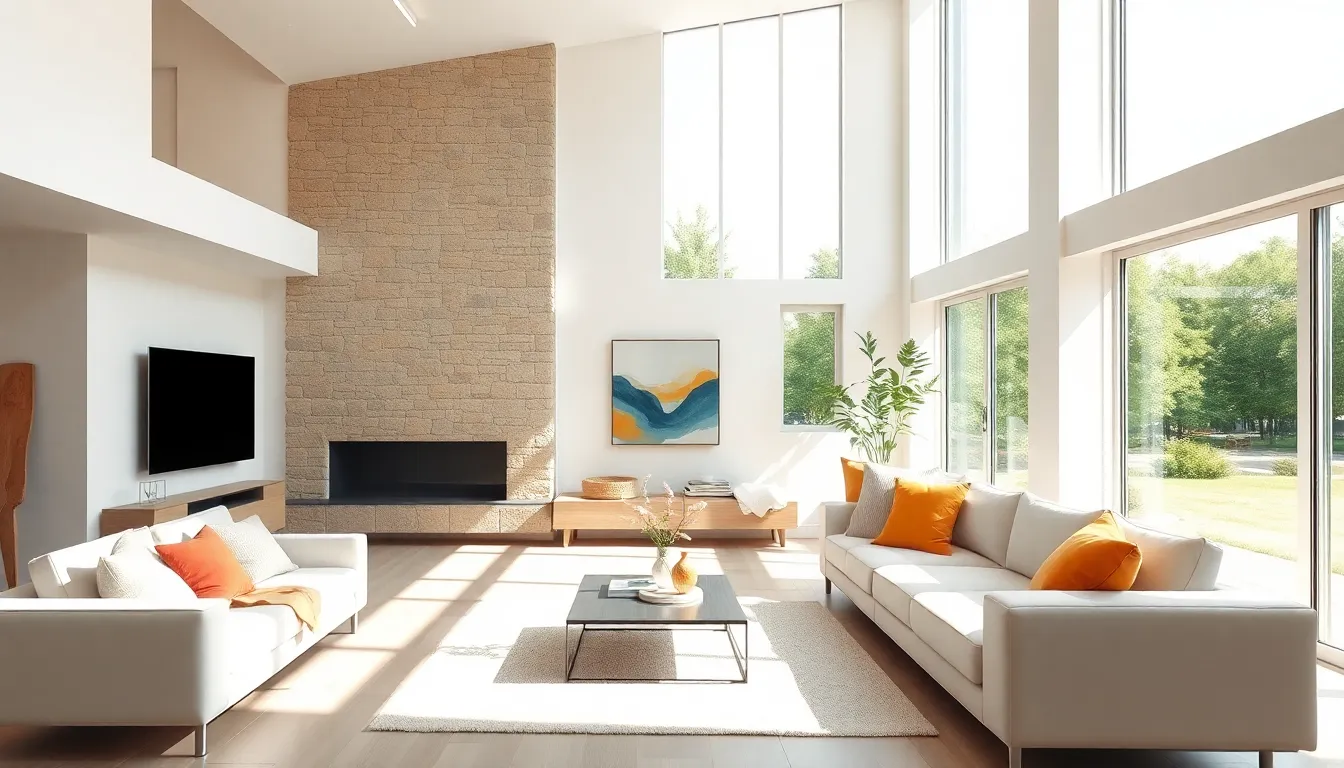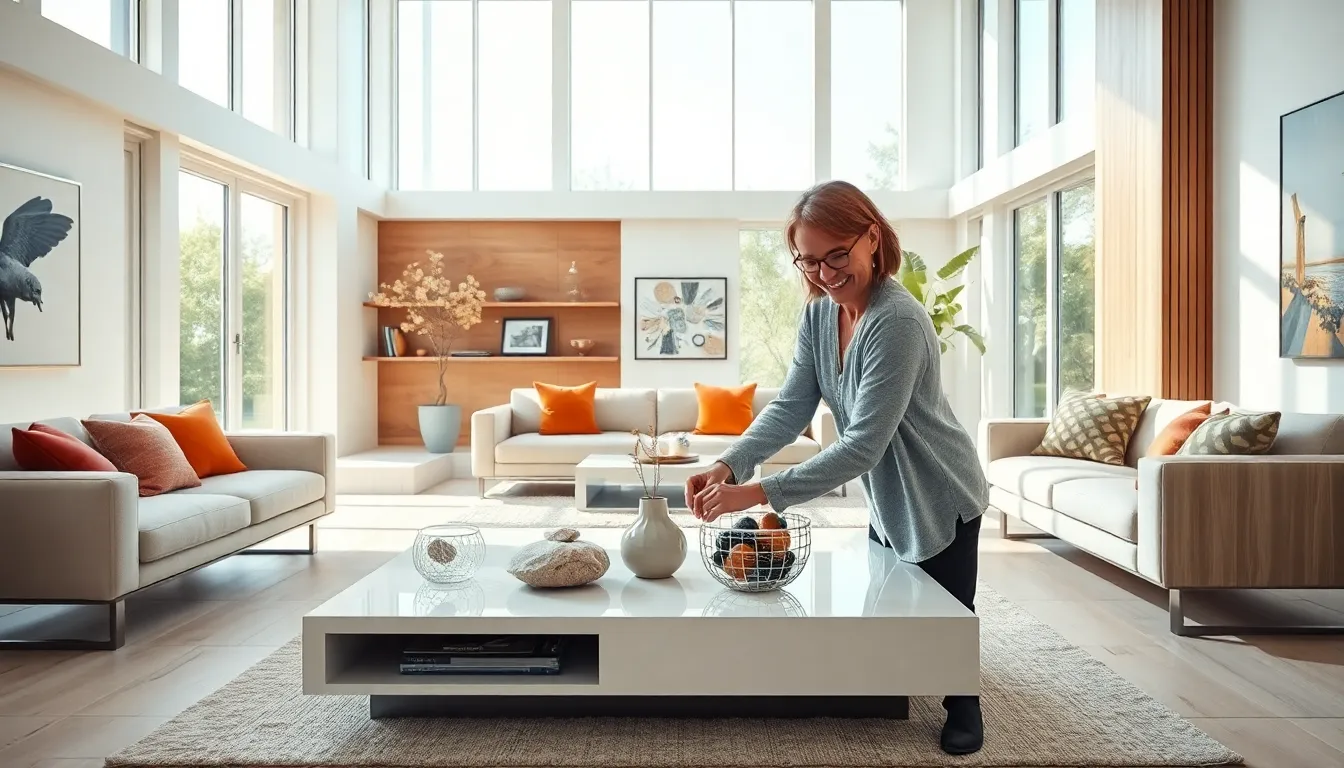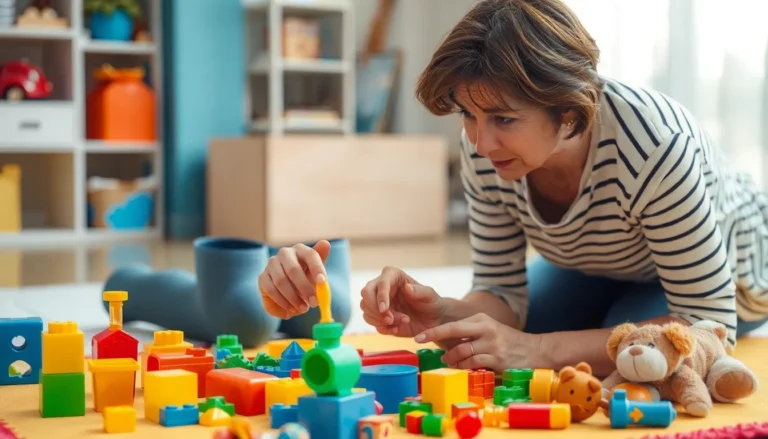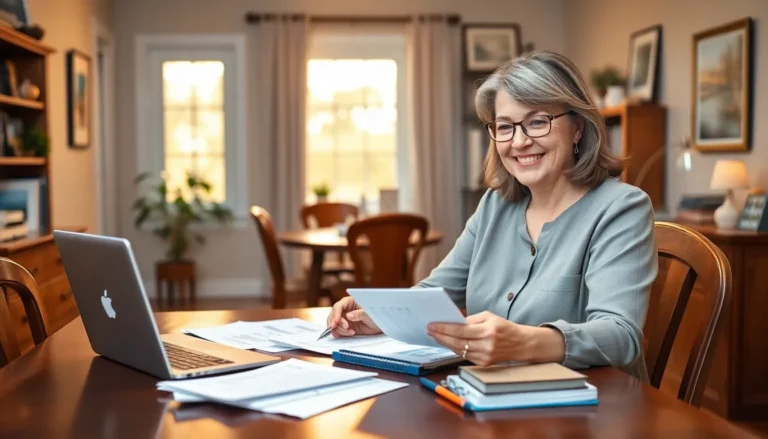Table of Contents
ToggleIn a world where everyone’s trying to outdo each other with the latest gadgets and trends, modern home design stands out like a well-placed potted plant in a sea of chaos. It’s not just about aesthetics; it’s about creating a space that reflects personality while being functional. Imagine a home that’s so stylish it practically begs for a photoshoot—complete with a latte in hand and a dog lounging in the background.
But let’s face it, modern design isn’t just for the Instagram influencers. It’s for anyone who wants their home to feel fresh and inviting without sacrificing comfort. From sleek lines to clever storage solutions, modern design offers a little something for everyone. So grab your virtual hard hat and get ready to dive into the world of modern home design, where creativity meets practicality and every room tells a story.
Overview Of Modern Home Design
Modern home design emphasizes a harmonious blend of aesthetics and functionality. Sleek lines and minimalistic spaces define its core principles. By integrating personal style, individuals create inviting environments that are both practical and beautiful.
Key characteristics of modern design include open floor plans, which enhance light and space. Large windows maximize natural light, promoting a sense of connection to the outdoors. Neutral color palettes, complemented by bold accents, establish visual interest without overwhelming the senses.
Innovative storage solutions are essential in modern designs. Built-in shelves and multifunctional furniture optimize space, ensuring that homes remain uncluttered. Additionally, eco-friendly materials cater to sustainability, reflecting a growing trend in conscious living.
Technology plays a significant role in contemporary homes. Smart home systems enable efficient control of lighting, temperature, and security, raising convenience to new heights. Integrating these technologies seamlessly into the design enhances both the functionality and the aesthetic appeal.
Customization options abound in modern home design. Homeowners can choose distinctive finishes and fixtures that reflect their tastes. Unique architectural elements, such as cantilevered roofs or asymmetrical shapes, further elevate the design.
Modern home design provides diverse opportunities for creativity and innovation. With a focus on functionality, sustainability, and personal expression, it invites everyone to participate in shaping their living environments.
Key Characteristics Of Modern Home Design

Modern home design emphasizes a blend of aesthetics and functionality. Key elements contribute to its unique appeal.
Open Floor Plans
Open floor plans promote fluidity and communication within living spaces. These layouts connect various areas, such as the kitchen, dining room, and living room. Many homeowners appreciate the sense of spaciousness, allowing families to interact more easily. This design fosters a seamless flow, enhancing everyday activities. Additionally, the lack of walls invites creativity in furniture placement and decor choices.
Minimalist Aesthetics
Minimalist aesthetics define modern homes with clean lines and simplicity. Less clutter results in a more organized environment. Natural materials, such as wood and stone, often highlight the subtle beauty in form and texture. Homeowners opt for functional furniture that complements the overall design without overwhelming spaces. A neutral color palette, accented by bold hues, reinforces this timeless style.
Natural Light Integration
Natural light integration plays a crucial role in modern home design. Large windows create brightness and warmth, reducing reliance on artificial lighting. Skylights often enhance this effect, offering a unique way to invite sunlight. Well-placed windows link indoor and outdoor spaces, promoting a sense of connection with nature. Homeowners benefit from improved mood and energy efficiency through thoughtful placement of light sources.
Popular Styles In Modern Home Design
Modern home design encompasses various styles that reflect current trends and personal preferences. Each style showcases unique characteristics, allowing homeowners to choose an aesthetic that resonates with them.
Mid-Century Modern
Mid-Century Modern design emphasizes clean lines and organic shapes. Iconic furniture pieces feature tapered legs and understated elegance. Often, this style incorporates large windows to enhance natural light. Bold colors in accent pieces add vibrancy, while neutral tones dominate walls and larger furniture. Integrating indoor and outdoor spaces promotes a seamless flow, fostering a sense of connection to nature. Notable figures, like architect Richard Neutra, have shaped this movement, influencing residential architecture since the 1940s.
Industrial Modern
Industrial Modern design draws inspiration from warehouses and factories. Raw materials like exposed brick, metal beams, and concrete floors define this style. Open spaces showcase high ceilings and large windows, enhancing light and air circulation. Furniture often features reclaimed wood and metal accents, providing a rugged yet stylish look. Vintage elements, such as filament light bulbs and old machinery, can be incorporated for added character. This design fosters an informal, urban vibe in residential settings.
Scandinavian Design
Scandinavian Design prioritizes functionality and simplicity. Minimalism is a key element, characterized by clean lines and muted color palettes. Natural materials, like wood and wool, create warmth and comfort. Bright, airy spaces often utilize natural light, reinforcing a connection to the outdoors. Thoughtful organization and clever storage solutions enhance practicality, making every square foot valuable. This design promotes tranquility and balance, resulting in inviting living environments that reflect peace and harmony.
Sustainable Practices In Modern Home Design
Sustainable practices play a critical role in modern home design, emphasizing eco-conscious choices for longevity and environmental impact.
Use Of Eco-Friendly Materials
Choosing eco-friendly materials significantly contributes to sustainability. Bamboo, reclaimed wood, and recycled metal stand out for their low environmental footprints. These materials not only reduce waste but also enhance the aesthetic appeal of living spaces. Organic textiles and low-VOC paints promote healthier indoor air quality. Manufacturers increasingly produce these materials sustainably, ensuring responsible sourcing that minimizes ecological harm. Homeowners can create beautiful spaces while supporting green initiatives, demonstrating a commitment to preserving the planet.
Energy Efficiency Considerations
Energy efficiency is essential in modern home design. Incorporating energy-efficient appliances reduces consumption and lowers utility bills. Proper insulation and energy-efficient windows retain heat, maintaining comfortable indoor temperatures. Solar panels also offer a renewable energy source, further minimizing reliance on fossil fuels. Smart home technology enhances energy management by optimizing consumption patterns. In addition, strategic landscaping can provide natural shade, reducing cooling costs. Prioritizing energy efficiency not only benefits homeowners financially but also supports environmental sustainability.
Modern home design offers a unique opportunity to blend personal style with functionality. By embracing open spaces and natural elements, homeowners can create environments that are both inviting and practical. The focus on sustainability and smart technology not only enhances everyday living but also fosters a deeper connection to the planet.
Exploring various styles like Mid-Century Modern and Scandinavian Design allows individuals to find inspiration that resonates with their tastes. As modern design continues to evolve, it invites everyone to participate in crafting spaces that reflect their values and lifestyles. This journey toward a well-designed home is not just about aesthetics; it’s about creating a sanctuary that nurtures well-being and creativity.








